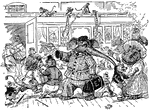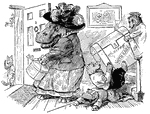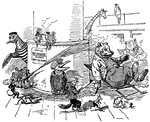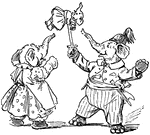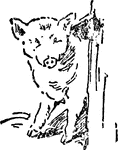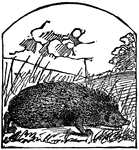
Hedgehog
A small animal having the hair on the upper part of its body mixed with prickles or spines, and endowed…

Anoplotherium Commune
"The Anoplotherium commune was of the height of the wild boar, but its form was more elongated;…
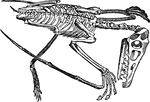
Pterodactyle skeleton
"So peculiar and strange is the structure of these animals, that the first specimen discovered was classed…

Shore-jumper
"The bodies of these animals are compressed laterally, and curved upon the sides; the eyes are immovable,…
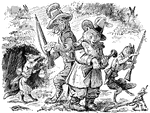
When the Animals Were at War
A scene from the story, When The Animals Were At War. Fox, the gun seller, was glad.

When the Animals Were at War
A scene from the story, When The Animals Were At War. The spy was caught.

When the Animals Were at War
A scene from the story, When The Animals Were At War. Drilling before the battle.
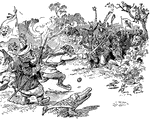
When the Animals Were at War
A scene from the story, When The Animals Were At War. The elephants poured water; the monkeys…
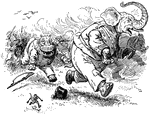
When the Animals Were at War
A scene from the story, When The Animals Were At War. The elephant ran fastest of all.

When the Animals Were at War
A scene from the story, When The Animals Were At War. They shot all their powder away.
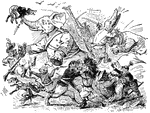
When the Animals Were at War
A scene from the story, When The Animals Were At War. The fighting was paw to paw.
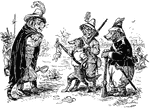
When the Animals Were at War
A scene from the story, When The Animals Were At War. Wolf makes a capture.

When the Animals Were at War
A scene from the story, When The Animals Were At War. Tiger was caught and brought into camp.

When the Animals Were at War
A scene from the story, When The Animals Were At War. Sent off to perpetual banishment.
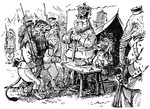
When the Animals Were at War
A scene from the story, When The Animals Were At War. Leo held a court-martial.

When the Animals Were at War
A scene from the story, When The Animals Were At War. Bewarding the heroes.
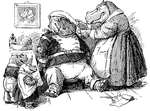
When the Animals Were at War
A scene from the story, When The Animals Were At War. Poor hippo was wounded.
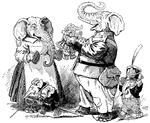
When the Animals Were at War
A scene from the story, When The Animals Were At War. When Johnnie comes marching home- aren't…

When the Animals Were at War
A scene from the story, When The Animals Were At War. In King Leo's court.
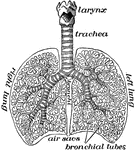
The lungs
"The lungs fill up most of the cavity of the chest. One lies on either side of the heart which is in…
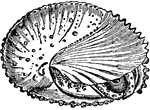
Mollusca
A sub-kingdom of animals embracing a division of the invertebrates. It includes especially those having…

Well Water
How the well often becomes impure and carries disease. A well near a barnyard or cesspool is likely…

Musk Ox
An animal resembling an ox and a sheep, and regarded as a connecting link between those two classes…

Otter
A class of carnivorous mammals of the weasel family, which includes about twenty species that vary greatly…

Peccary
A genus of animals allied to the swine, and found extensively in South America and the southern parts…

Carnivorous Skeleton
The teeth of a carnivorous animal that lives on flesh alone. The front teeth are tearing ones, while…

Salamander
A class of animals allied to the newts, which closely resemble the lizards. Many species have been described.…
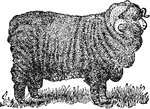
Sheep
An important and useful class of ruminant animals, which are closely allied to the goat, but differ…
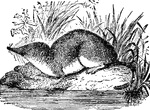
Shrew
A genus of animals resembling the mouse and the dormouse, but distinguished from them in having soft…

Skeleton
The framework of animals, which in vertebrates is composed of bone and cartilage. It serves to support…
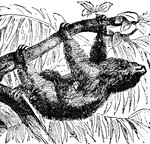
Sloth
A genus of mammals belonging to the bear family. They are native to Central and South America. These…

Starfish
A class of marine animals, which have a star-like body composed of a central disc extended into five…

Whale
The common name of animals belonging to the order cetacea, with which are included the porpoise and…
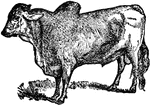
Zebu
A class of animals of the ox family, which are reared extensively from Japan to East Africa, but they…
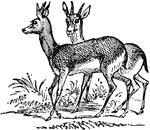
Gazelles
A gazelle is an antelope of the genus Gazella. They are known as fast animals; they are able to reach…
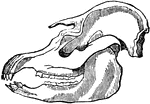
Tapir Skull
This illustration shows the skull of a tapir. Tapirs are large browsing animals, roughly pig-like in…
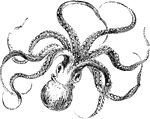
Cuttle-fish
Cuttlefish are animals of the order Sepiida, and are marine cephalopods, small relatives of squid and…
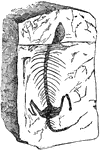
Fossil
This illustration shows the ancient fossile of an amphibian. Fossils are the mineralized or otherwise…
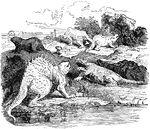
Ancient Animals
This is an illustration of the smaller animals from the time when Dinosaurs ruled the planet.
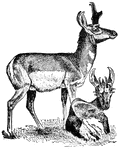
Antelope
A group of herbivorous African animals of the family Bovidae, distinguished by a pair of hollow horns…
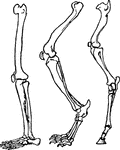
Skeletal Feet
The part of the limb upon which an animal stands when resting. A comparison of the foot in various animals…

Rampant Lion
"The lion holds an important place among the animals born in coat-armor. As early as the 12th century,…
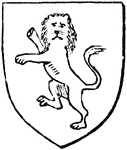
Gardant Lion
"The lion holds an important place among the animals born in coat-armor. As early as the 12th century,…
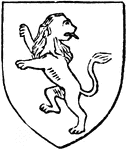
Rampant Regardant Lion
"The lion holds an important place among the animals born in coat-armor. As early as the 12th century,…
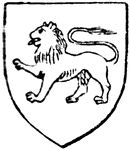
Passant Lion
"The lion holds an important place among the animals born in coat-armor. As early as the 12th century,…

Lion
"The lion holds an important place among the animals born in coat-armor. As early as the 12th century,…
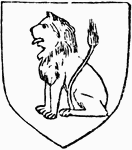
Lion
"The lion holds an important place among the animals born in coat-armor. As early as the 12th century,…
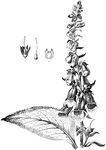
Purple Foxglove
A biennial herb native to Europe. Its leaves and flowers are poisonous to humans and some animals.

Horse Foot
"Successive stages of modification of the feet of extinct forms of horse-like animals, showin gradual…

Horse Foot
"Successive stages of modification of the feet of extinct forms of horse-like animals, showin gradual…

